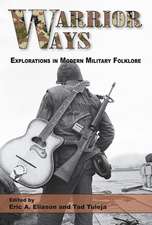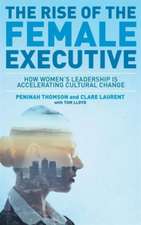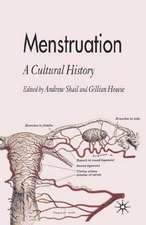Translating Maternal Violence: The Discursive Construction of Maternal Filicide in 1970s Japan: Thinking Gender in Transnational Times
Autor Alessandro Castellinien Limba Engleză Paperback – 4 noi 2020
This book provides the first full-length, English-language investigation of the multiple and often contradictory ways in which mothers who kill their children were portrayed in 1970s Japan. It offers a snapshot of a historical and social moment when motherhood was being renegotiated, and maternal violence was disrupting norms of acceptable maternal behaviour. Drawing on a wide range of original archival materials, it explores three discursive sites where the image of the murderous mother assumed a distinctive visibility: media coverage of cases of maternal filicide; the rhetoric of a newly emerging women’s liberation movement known as ūman ribu; and fictional works by the Japanese writer Takahashi Takako. Using translation as a theoretical tool to decentre the West as the origin of (feminist) theorizations of the maternal, it enables a transnational dialogue for imagining mothers' potential for violence. This thought-provoking work will appeal to scholars of feminist theory, cultural studies and Japanese studies.
| Toate formatele și edițiile | Preț | Express |
|---|---|---|
| Paperback (1) | 484.69 lei 6-8 săpt. | |
| Palgrave Macmillan UK – 4 noi 2020 | 484.69 lei 6-8 săpt. | |
| Hardback (1) | 586.70 lei 6-8 săpt. | |
| Palgrave Macmillan UK – 7 mar 2017 | 586.70 lei 6-8 săpt. |
Preț: 484.69 lei
Nou
Puncte Express: 727
Preț estimativ în valută:
92.74€ • 101.06$ • 78.15£
92.74€ • 101.06$ • 78.15£
Carte tipărită la comandă
Livrare economică 23 aprilie-07 mai
Preluare comenzi: 021 569.72.76
Specificații
ISBN-13: 9781349711611
ISBN-10: 1349711616
Pagini: 273
Ilustrații: XI, 273 p. 3 illus.
Dimensiuni: 148 x 210 mm
Greutate: 0.35 kg
Ediția:1st ed. 2017
Editura: Palgrave Macmillan UK
Colecția Palgrave Macmillan
Seria Thinking Gender in Transnational Times
Locul publicării:London, United Kingdom
ISBN-10: 1349711616
Pagini: 273
Ilustrații: XI, 273 p. 3 illus.
Dimensiuni: 148 x 210 mm
Greutate: 0.35 kg
Ediția:1st ed. 2017
Editura: Palgrave Macmillan UK
Colecția Palgrave Macmillan
Seria Thinking Gender in Transnational Times
Locul publicării:London, United Kingdom
Cuprins
Introduction.- Chapter 1.- Filicide in the media: news coverage of mothers who kill in 1970s Japan.- Chapter 2. The Women’s Liberation Movement in 1970s Japan.- Chapter 3. Contested meanings: mothers who kill and the rhetoric of ūman ribu.- Chapter 4. Filicide and maternal animosity in Takahashi Takako’s early fiction.- Conclusion.
Notă biografică
Alessandro Castellini is LSE Fellow in Transnational Gender Studies at the London School of Economics and Political Science, UK.
Textul de pe ultima copertă
This book provides the first full-length, English-language investigation of the multiple and often contradictory ways in which mothers who kill their children were portrayed in 1970s Japan. It offers a snapshot of a historical and social moment when motherhood was being renegotiated, and maternal violence was disrupting norms of acceptable maternal behaviour. Drawing on a wide range of original archival materials, it explores three discursive sites where the image of the murderous mother assumed a distinctive visibility: media coverage of cases of maternal filicide; the rhetoric of a newly emerging women’s liberation movement known as ūman ribu; and fictional works by the Japanese writer Takahashi Takako. Using translation as a theoretical tool to decentre the West as the origin of (feminist) theorizations of the maternal, it enables a transnational dialogue for imagining mothers' potential for violence. This thought-provoking work will appeal to scholars of feminist theory, cultural studies and Japanese studies.
Caracteristici
Exposes the cultural alterity inherent to different understandings of women who kill their children Challenges the all-too-familiar dichotomy drawn between ‘the West' and 'the Rest of the World’ Goes beyond gender and motherhood studies to examine the fraught relationship between cultural and area studies
























